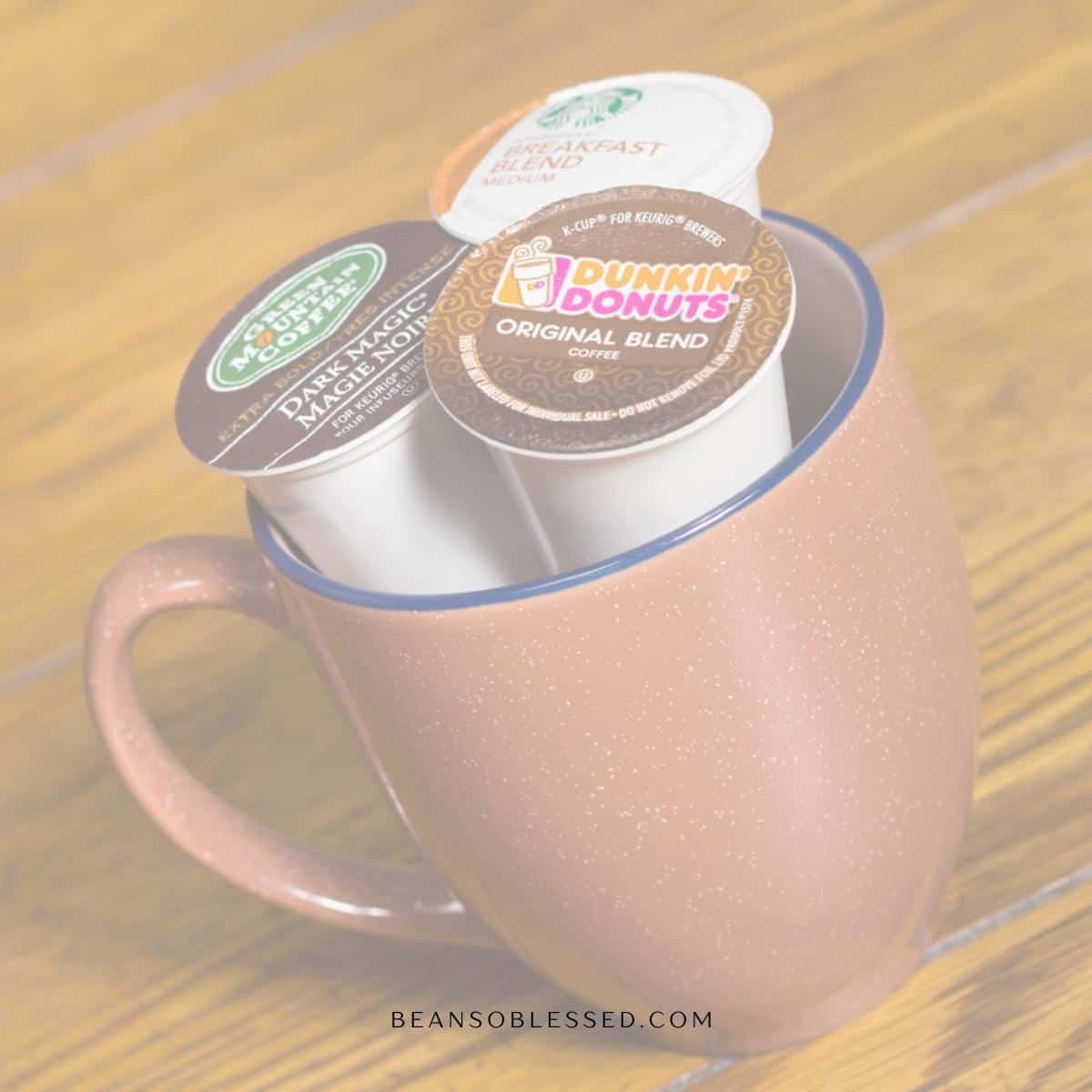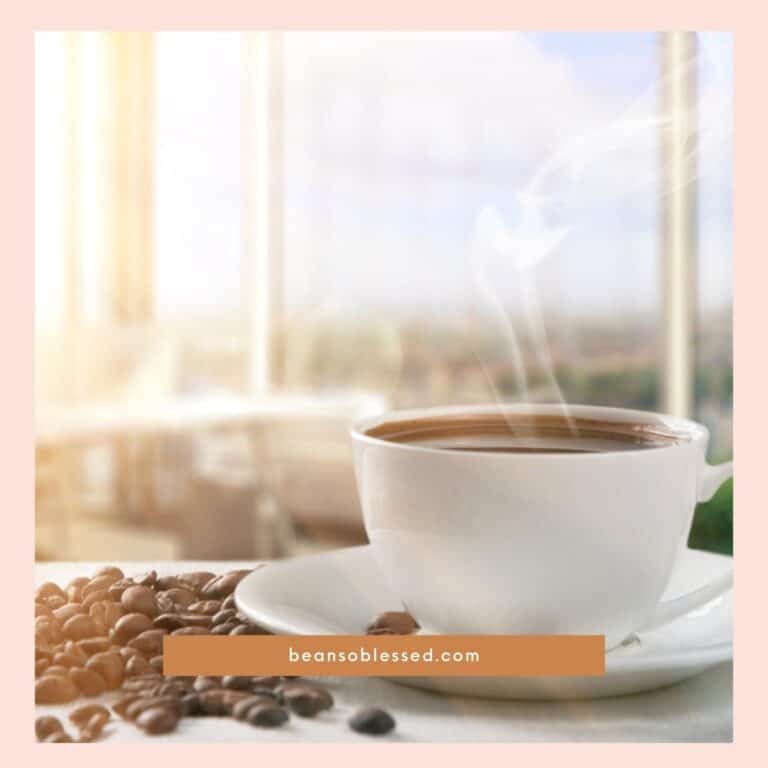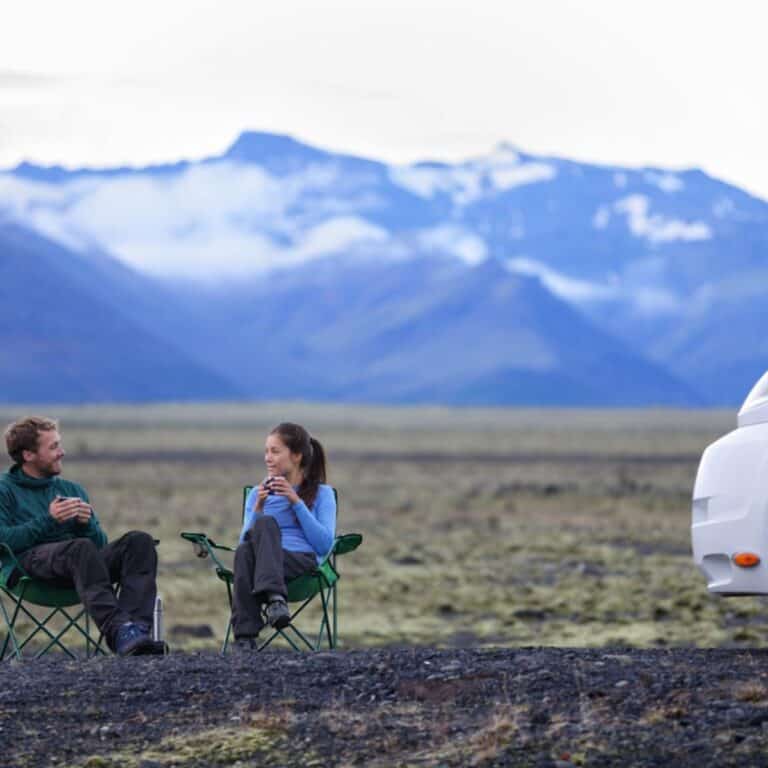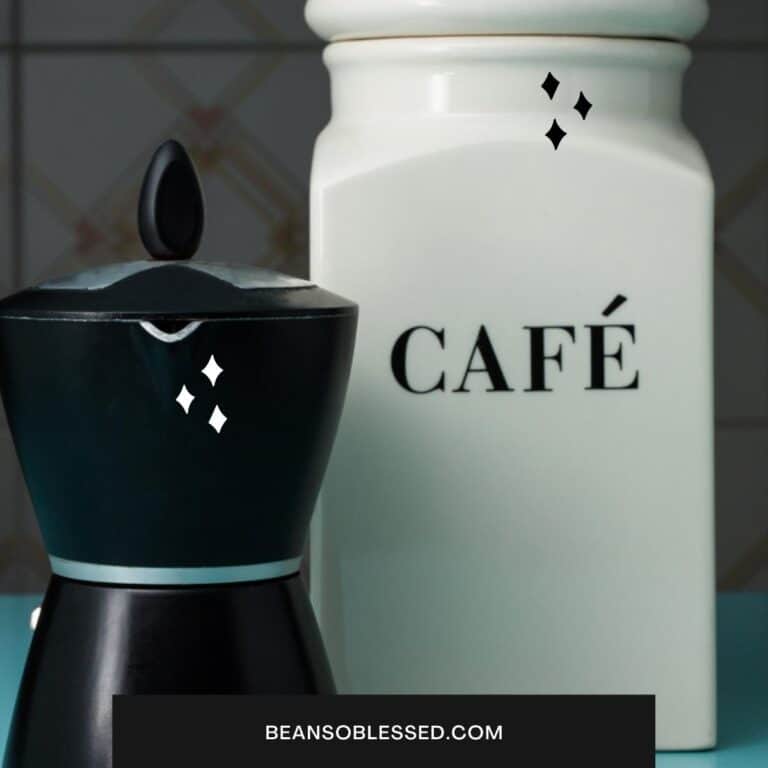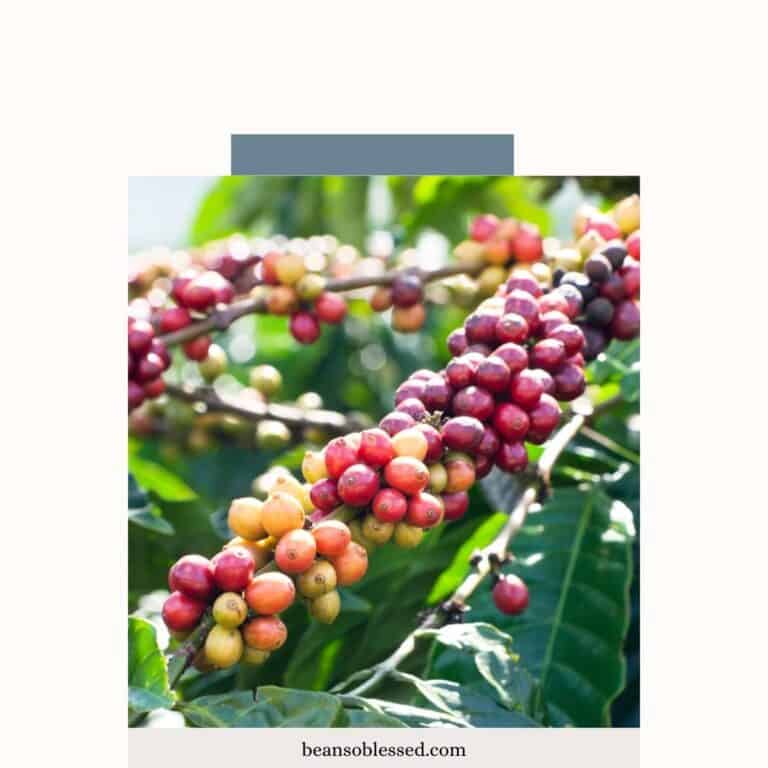Caffeine in K-Cups – A Guide to Your Best Morning Friend
Caffeine in K-Cups? Well, What About in a “Regular” Cup of Coffee?
Ok we are talking about caffeine in K-Cups but how do they measure up to a “regular” cup of coffee?
Not all coffee is equal in flavor or jolt.
When you are tired, a weak coffee is nothing more than a mug of hot disappointment. But one of the advantages of pods is that they provide a consistent cup with no nasty surprises.
One of the most popular single-serving brew brands are K-Cups. But how much caffeine does such a tiny capsule bring to your mug?
Keurig states that an 8oz (250ml) cup of coffee made from a K-Cup contains 75 to 150mg of caffeine. This is slightly lower than your average drip coffee, with 165 mg per 8oz cup.
Also, no decaffeinated coffee is truly devoid of all caffeine. Thus, K-Cup decaf pods will contain 2 to 4mg per 80z cup.
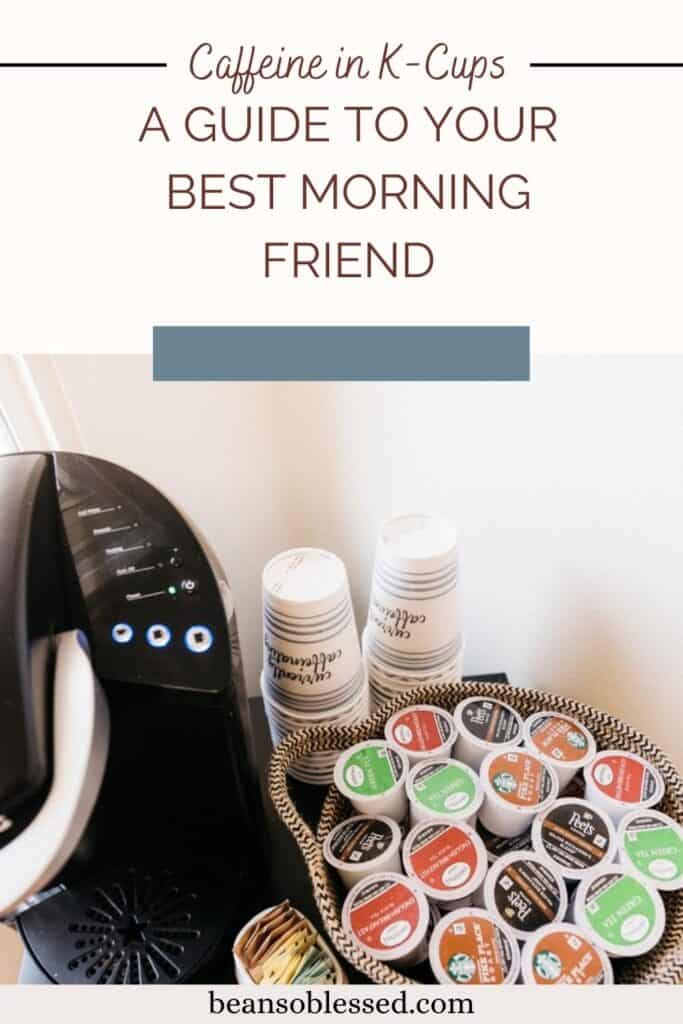
The amount of caffeine in your mug is more than espresso vs. morning blend.
First, there is the roasting of the beans.
A darker roast typically contains less caffeine than lighter beans.
Then there is the brewing technique. You could take the same roast and produce five different strengths simply due to how you prepared the coffee.
We of course love the Bean So Blessed coffee capsules (they fit in most Keurig-type machines, too!)
Are K-Cups Weaker Than Regular Coffee?
So looking at the caffeine in K-Cups, they have 75 to 150mg.
The wide span is due to the huge variety of K-Cup offerings, including an extra bold range. Hence, how much punch your K-Cup pod contains will depend on what you are buying.
Their regular capsules generally have 2 tablespoons of ground coffee per pod. However, their extra bolds typically have 2.6 tablespoons, making them stronger and closer to the 150mg mark.
75-150mg of caffeine per 8oz cup is weaker than your typical cup of coffee.
However, this isn’t because the coffee in the pod itself is weak, but the brewing method.
The speed achieved comes at a price, a slightly weaker brew. But the difference isn’t huge. From weakest to strongest, your average 8oz cup of coffee from other brewing methods is:
- 80-135mg French Press
- 155mg Cold Brew
- 165mg Drip Coffee
- 175mg Pour-over
Of course, these figures assume you are brewing the coffee correctly. We’ve all me that person who can take the strongest roast and make nearly caffeine-free dishwater no matter what brewing method they use. It’s the anti-gift that spreads unhappiness like a virus from mug to mug.
Why Do Darker Roasts Have Less Caffeine?
It is commonly believed darker roasts make stronger coffee. Darker roasts do make strong coffee, but that doesn’t mean they are high in caffeine. It is lighter roasts that generally have higher caffeine levels. The typical reduced caffeine levels in a darker coffee bean are due to the longer roasting.
The roasting process doesn’t reduce the caffeine level of the actual bean by any significant amount. However, the longer the roast, the more the bean expands.
Thus, if you took two identical bowls and filled one with light roast and one with dark roast, you would have more actual beans in the light roast bowl.
In addition, if you had a hundred light roast beans and a hundred dark, the light ones would be heavier.
Therefore, it is the lack of density that makes dark roast generally weaker in the caffeine count.

Why Do Darker Roasts Make Strong Coffee?
The word “strong” in the coffee world isn’t necessarily referring to caffeine levels.
A “strong” coffee usually has more flavor. The “strength” can be partly due to water content. For example, espresso is highly concentrated coffee.
But in the coffee world, the strength of the coffee is often determined by its TDS value.
TDS means “total dissolved solids” and refers to how much of the actual coffee ends up hanging out in the water. The more coffee that finds its way into your actual mug, the “stronger” the cup. However, coffee with a high TDS value doesn’t necessarily have high caffeine content.
Conclusion
K-Cup coffee is not the most potent way to drink your morning wake-up.
But that’s partly to do with how capsule coffee is made rather than the actual coffee. Nor does choosing a “strong” coffee necessarily mean it has more caffeine but more flavor.
If you like the convenience of K-Cup java, you know know how much caffeine in K-Cup coffee. If you prefer more caffeine, there are plenty of other brewing methods that may better suit your needs.
